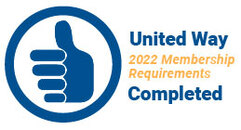|
February 23rd is the first-year anniversary of this column. Thank you to the faithful readers who have read and commented on it. As we mark this occasion, it is a good opportunity to look back and review information discussed so far. I encourage you to test yourself and see how much you have learned about the opioid epidemic. I will be using a question/answer format for the next two columns. Read the questions, and try to answer before reading on. Each of these questions was answered in detail during the past year of This for you, Chad articles.
Q1. What are opioids and why are they so dangerous? Opioids are drugs derived from the poppy plant. They include prescription medications such as hydrocodone, oxycontin, morphine, and fentanyl, as well as illegal drugs such as heroin. Opioids are dangerous because they can quickly lead to physical dependence. Over time they change the structure of the brain, leading to constant drug cravings and addiction. Q2. What is the danger of fentanyl? Fentanyl is a highly potent opioid. It only takes a few grains (think grains of salt) to cause overdose and death. Fentanyl is cheap and easy to illicitly obtain. Many drug dealers mix fentanyl with other substances to increase the high and likelihood of addiction, creating repeat customers. Q3. What are signs someone has a problem with drugs? The most common signs are changes in behavior such as change in friends, mood swings, increased financial need, and secrecy. Those around the person often sense that something is wrong, but are unsure what the problem is. At the beginning of the problem, the signs may be easily hidden or confused with stress and life change. Q4. Who can become addicted? ANYONE! Some people can become hooked on opioids in a single dose. Seniors and youth are vulnerable, as is anyone with an opioid prescription. Q5. Can people who are involved in addiction recover? Absolutely! There are 23 million people in active recovery in the United States today. Treatment works. Recovery is possible. There is hope. Call for peer recovery support, 24 hours a day: 765-490-0381. Q6. What is M.A.T.? M.A.T. is medication assisted treatment for opioid use disorder which includes opioid replacement medication and counseling to deal with underlying issues that contributed to substance use. It is considered the gold standard of treatment by addiction specialists, but some others consider it replacing one opioid with another. Q7. What are factors that contributed to the opioid epidemic? Many influences sparked the epidemic: Pain as 5th patient vital sign and financial incentives for positive patient satisfaction surveys, aggressive marketing by pharmaceutical companies, the war on drugs, drug cartels, societal demands for quick fixes, breakdown of the family and community, and lack of insurance coverage for holistic pain treatment are often cited as sources of the problem. Q8. How does addiction affect families? Addiction not only affects the person using substances, but their loved ones are also ensnared in the crisis. Family members may struggle to support their loved ones without enabling substance use, often experience emotional trauma of their loved ones’ struggles, suffer blame and judgement from others, second-guess every decision made in their relationship, and wait endlessly for the phone to ring with the next crisis. The more vulnerable a family member of a person using substances, the more likely they are to become victims of theft, fraud, abuse, and/or neglect. How did you do? To reread the full articles, please go to the White County United Way website. http://www.whitecountyunitedway.org/lynn
0 Comments
Your comment will be posted after it is approved.
Leave a Reply. |
AuthorLynn Saylor is the AmeriCorps member working with the United Against Opioid Abuse Initiative alongside the White County United Way. She is a major facilitator of the United Council on Opioids serving White County and a regular contributor to local media. Archives
October 2020
Categories
All
|

 RSS Feed
RSS Feed
